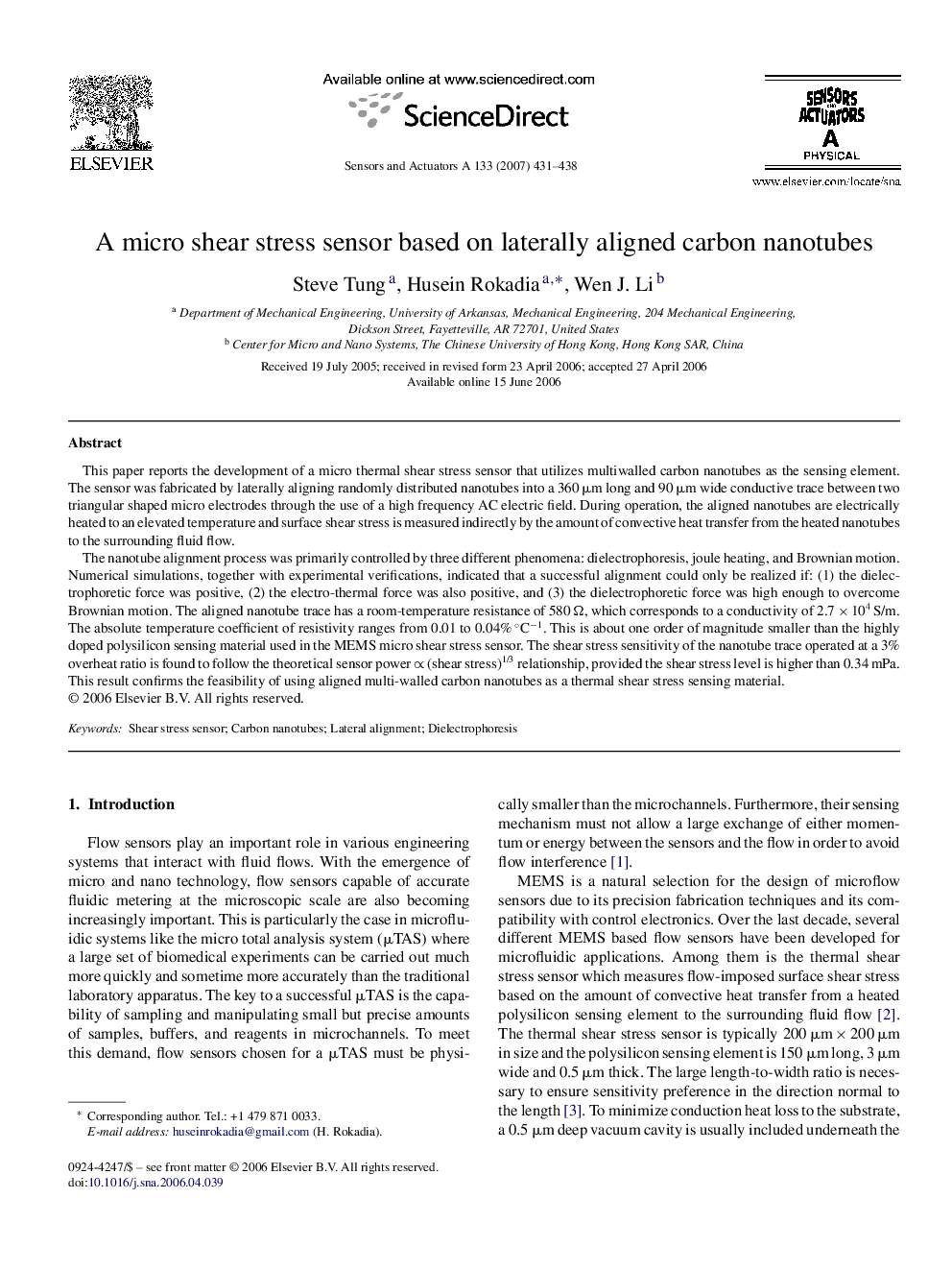| Article ID | Journal | Published Year | Pages | File Type |
|---|---|---|---|---|
| 740519 | Sensors and Actuators A: Physical | 2007 | 8 Pages |
This paper reports the development of a micro thermal shear stress sensor that utilizes multiwalled carbon nanotubes as the sensing element. The sensor was fabricated by laterally aligning randomly distributed nanotubes into a 360 μm long and 90 μm wide conductive trace between two triangular shaped micro electrodes through the use of a high frequency AC electric field. During operation, the aligned nanotubes are electrically heated to an elevated temperature and surface shear stress is measured indirectly by the amount of convective heat transfer from the heated nanotubes to the surrounding fluid flow.The nanotube alignment process was primarily controlled by three different phenomena: dielectrophoresis, joule heating, and Brownian motion. Numerical simulations, together with experimental verifications, indicated that a successful alignment could only be realized if: (1) the dielectrophoretic force was positive, (2) the electro-thermal force was also positive, and (3) the dielectrophoretic force was high enough to overcome Brownian motion. The aligned nanotube trace has a room-temperature resistance of 580 Ω, which corresponds to a conductivity of 2.7 × 104 S/m. The absolute temperature coefficient of resistivity ranges from 0.01 to 0.04% °C−1. This is about one order of magnitude smaller than the highly doped polysilicon sensing material used in the MEMS micro shear stress sensor. The shear stress sensitivity of the nanotube trace operated at a 3% overheat ratio is found to follow the theoretical sensor power ∝ (shear stress)1/3 relationship, provided the shear stress level is higher than 0.34 mPa. This result confirms the feasibility of using aligned multi-walled carbon nanotubes as a thermal shear stress sensing material.
